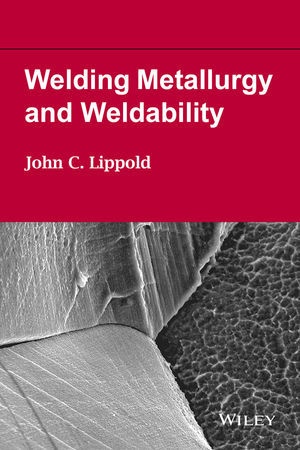En savoir plus
"This book describes the weldability aspects of many structural materials used in a wide variety of engineering structures, including steels, stainless steels, Ni-base alloys, and Al-base alloys. The basic mechanisms of weldability are described and methods to improve weldability are described. Specific topics include solidification and liquation cracking, solid-state cracking, hydrogen cracking, fracture and fatigue, and corrosion. Methods for interpretation of weld failures using computational and characterization techniques are described"--
Table des matières
Preface xiii
Author Biography xvi
1 Introduction 1
1.1 Fabrication-Related Defects 5
1.2 Service-Related Defects 6
1.3 Defect Prevention and Control 7
References 8
2 Welding Metallurgy Principles 9
2.1 Introduction 9
2.2 Regions of a Fusion Weld 10
2.3 Fusion Zone 13
2.3.1 Solidification of Metals 15
2.3.2 Macroscopic Aspects of Weld Solidification 24
2.3.4 Solute Redistribution 34
2.3.5 Examples of Fusion Zone Microstructures 40
2.3.6 Transition Zone (TZ) 43
2.4 Unmixed Zone (UMZ) 45
2.5 Partially Melted Zone (PMZ) 48
2.5.1 Penetration Mechanism 50
2.5.2 Segregation Mechanism 53
2.5.3 Examples of PMZ formation 58
2.6 Heat Affected Zone (HAZ) 60
2.6.1 Recrystallization and Grain Growth 61
2.6.2 Allotropic Phase Transformations 63
2.6.3 Precipitation Reactions 66
2.6.4 Examples of HAZ Microstructure 69
2.7 Solid-State Welding 70
2.7.1 Friction Stir Welding 72
2.7.2 Diffusion Welding 76
2.7.3 Explosion Welding 77
2.7.4 Ultrasonic Welding 79
References 81
3 Hot Cracking 84
3.1 Introduction 84
3.2 Weld Solidification Cracking 85
3.2.1 Theories of Weld Solidification Cracking 85
3.2.2 Predictions of Elemental Effects 94
3.2.3 The BTR and Solidification Cracking Temperature Range 97
3.2.4 Factors that Influence Weld Solidification Cracking 102
3.2.5 Identifying Weld Solidification Cracking 112
3.2.6 Preventing Weld Solidification Cracking 116
3.3 Liquation Cracking 119
3.3.1 HAZ Liquation Cracking 119
3.3.2 weld metal Liquation Cracking 122
3.3.3 Variables that Influence Susceptibility to Liquation Cracking 123
3.3.4 Identifying HAZ and weld metal Liquation Cracks 126
3.3.5 Preventing Liquation Cracking 127
References 128
4 Solid-State Cracking 130
4.1 Introduction 130
4.2 Ductility-dip Cracking 130
4.2.1 Proposed Mechanisms 133
4.2.2 Summary of Factors That Influence DDC 139
4.2.3 Quantifying Ductility-Dip Cracking 143
4.2.4 Identifying Ductility-Dip Cracks 145
4.2.5 Preventing DDC 147
4.3 Reheat Cracking 149
4.3.1 Reheat Cracking in Low-Alloy Steels 150
4.3.2 Reheat Cracking in Stainless Steels 155
4.3.3 Underclad Cracking 158
4.3.4 Relaxation Cracking 160
4.3.5 Identifying Reheat Cracking 161
4.3.6 Quantifying Reheat Cracking Susceptibility 163
4.3.7 Preventing Reheat Cracking 166
4.4 Strain-age Cracking 168
4.4.1 Mechanism for Strain-age Cracking 171
4.4.2 Factors That Influence SAC Susceptibility 178
4.4.3 Quantifying Susceptibility to Strain-age Cracking 182
4.4.4 Identifying Strain-age Cracking 189
4.4.5 Preventing Strain-age Cracking 189
4.5 Lamellar Cracking 190
4.5.1 Mechanism of Lamellar Cracking 191
4.5.2 Quantifying Lamellar Cracking 195
4.5.3 Identifying Lamellar Cracking 197
4.5.4 Preventing Lamellar Cracking 198
4.6 Copper Contamination Cracking 201
4.6.1 Mechanism for Copper Contamination Cracking 201
4.6.2 Quantifying Copper Contamination Cracking 203
4.6.3 Identifying Copper Contamination Cracking 205
4.6.4 Preventing Copper Contamination Cracking 205
References 207
5 Hydrogen-Indu
A propos de l'auteur
John C. Lippold received his BS, MS, and PhD degrees in Materials Engineering from Rensselaer Polytechnic Institute. Upon completion of his formal education, Dr. Lippold worked for seven years at Sandia National Laboratories, Livermore, CA, as a member of the technical staff, specializing in stainless steel and high alloy weldability. From 1985 to 1995, Dr. Lippold worked for Edison Welding Institute. From 1995 to the present, he has been on the faculty of the Welding Engineering program at The Ohio State University and was recently named a College of Engineering Distinguished Faculty member.
Résumé
This book describes the weldability aspects of many structural materials used in a wide variety of engineering structures, including steels, stainless steels, Ni-base alloys, and Al-base alloys. The basic mechanisms of weldability are described and methods to improve weldability are described.

